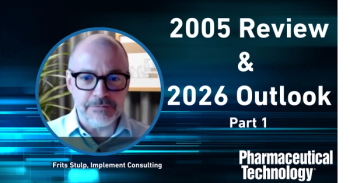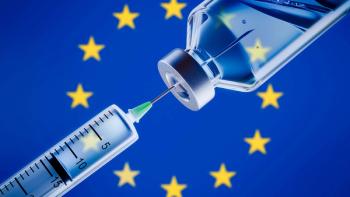
- Pharmaceutical Technology-10-02-2006
- Volume 30
- Issue 10
October 2006
GlycoFi's work could eliminate the need for mammalian cell culture and improve the performance of protein therapies.
CELL CULTURE
Re-engineered Yeast Glycosylation System Might Replace Mammalian Cell Expression
Lebanon, NH (Sept. 7)—Scientists from GlycoFi, Inc. (
As reported in the Sept. 8, 2006 issue of Science, the research team genetically engineered the Pichia pastoris yeast to secrete human glycoproteins with fully complex, terminally sialyated N-glycans. Recombinant erythropoietin, which stimulates the production of red blood cells, was successfully expressed using these yeast strains, purified, and its activity was demonstrated in vivo.
According to GlycoFi, the work "has the potential to eliminate the need for mammalian cell culture, while improving control over glycosylation and improving performance characteristics of many therapeutic proteins." The achievement follows a six-year study involving not only the elimination of yeast-specific glycosylation reactions, but also the introduction of 14 hetero-logous genes.
Yeast produces higher recombinant protein titers in shorter fermentation times compared with mammalian-culture systems. Yeast systems also do not have the risk of viral contamination associated with animal-based media. Tillman Gerngross, PhD, chief scientific officer of GlycoFi and professor of Bioengineering at Dartmouth College, says the advantages of yeast-expression technology "provide improvements in product uniformity and overall production economics. By engineering yeast to perform the final and most complex step of human glycosylation, we are now able to conduct far more extensive structure–function investigations on a much wider range of therapeutic protein targets."
–Maribel Rios
DRUG DELIVERY
Electric Pulse Delivers Nanoparticles, Biomolecules
Baltimore, MD (Sept. 10)—Researchers at Johns Hopkins University (JHU,
The researchers constructed long chains of hydrocarbon molecules. One end of the chain was anchored by a gold–sulfur bond to specially designed gold electrodes, each the width of a single human hair. The biomolecule to be released was attached to the other end. When a brief electrical pulse was sent through wires attached to each electrode, it broke the bond between the sulfur atoms and the gold platform, causing the tethered molecule to be released at a precise time.
The technology reportedly has several advantages over similar delivery techniques. "Because our molecules are attached to a surface, we can work with much smaller concentrations. We've also shown that our system is reusable. After a group of molecules is released, you can easily attach new molecules to an electrode and use it again," says Searson.
–Maribel Rios
IN MEMORIAM
Arthur R. Mlodozeniec, Consultant and Lecturer, Dies
Menlo Park, CA (Sept. 4)—Arthur R. Mlodozeniec, PhD, a noted lecturer and consultant and member of Pharmaceutical Technology's Editorial Advisory Board, died on Sept. 4 at his home in Menlo Park, California. He was 69 years old.
His death was announced by his son-in-law, James McCormick.
Dr. Mlodozeniec was a prominent contributor and advisor to Pharmaceutical Technology. His most recent article, "Challenging 'The Process Is the Product': Clarifying the Role of Information Technology in Biopharmaceutical Process Development" appeared in the journal's November 2004 supplement, Innovations in Information Technology.
At the time of his death, Dr. Mlodozeniec was lecturing on pharmaceutical technology at the University of California's Berkeley and Santa Cruz campuses. He was also a consultant, working with such companies as Baxter, Eli Lilly, and Genentech, and he served as past president of the American Association of Pharmaceutical Scientists (AAPS) and chair of AAPS's Generic Focus Group. He was a Fellow of AAPS, the American Pharmaceutical Association, and the American Association for the Advancement of Science.
Earlier in his career, he held positions as research scientist and section leader at Upjohn, group leader in advanced technology and director of quality control at Hoffmann-LaRoche, executive director and distinguished scientist at Merck, director of manufacturing engineering and pharmaceutical automation at Syntex, and chief scientific officer at PharmQuest Corp.
Dr. Mlodozeniec earned his bachelor's degree in pharmacy from Fordham University and a PhD in physical chemistry from the University of Wisconsin.
He is survived by his daughters, Tracey McCormick and Wendy Huigens; granddaughter Madison Huigens; brothers Gary and Eugene, and a sister, Joanne Young.
A memorial service was held Sept. 23 at St. Bernard's, 1990 Clinton St., in Buffalo, New York, where Dr. Mlodozeniec was born. Interment followed at St. Stanislaus Cemetery.
Pharmaceutical Technology mourns his passing.
–Douglas McCormick and Brianne Harrison
The family has established a scholarship fund in memory of Dr. Mlodozeniec. Contributions may be sent to the Arthur Mlodozeniec Pharmaceutical Scholarship Fund, The Bank of America, Account No. 11307-41783, 2180 Sand Hill Road, Menlo Park, CA 94025.
LEGAL/REGULATIONS
Biovail Sues FDA, Seeks Enforcement of Bioequivalence Criteria
Mississauga, ON, Canada (Aug. 24)—Biovail Corporation (
The company is seeking a temporary restraining order and a preliminary injunction directing FDA to resolve the issues set forth in the Citizen Petition at least one week before the agency's expected approval of a Wellbutrin XL generic product. The action is meant to ensure Biovail seeks "judicial review, if appropriate, of any FDA decision that does not incorporate Biovail's stated approval criteria."
The company claims the bioequivalence and labeling requirements stated in its Citizen Petition would protect the public against the potentially harmful effects of generic versions that were not truly bioequivalent or misleadingly labeled.
–Maribel Rios
REGULATIONS
FDA Warns Against Mass-Produced, Compounded Drugs; Compounders Ruled Exempt from FDA Regulation
Rockville, MD (Aug. 10) and Midland, TX (Aug. 30)—The US Food and Drug Administration (
FDA says that because the three companies compounded and distributed the inhalable drugs in large amounts, they have gone "well beyond traditional compounding," according to an official FDA announcement. Traditional compounding is only intended for preparing a unique drug for a patient who is allergic to an ingredient in an FDA-approved drug. Compounded preparations should not be mass-produced because the changes made from the FDA-approved drugs may not relate to every patient's specific medical needs.
Rotech already has said it no longer will accept prescriptions for some of its compounded drugs and will dispense only FDA-approved formulations to some 30,000 of its patients, though it disagreed with FDA's position.
Federal court rulings. Compounding pharmacies have recently drawn increased attention from FDA. In May 2006, US District Court Judge Robert Junell ruled that compounded formulations are not new, unapproved drugs and are out of FDA's jurisdiction. And on Aug. 30, Junell issued a written opinion in Medical Center Pharmacy, et al. v. Gonzalez, et al., supporting the ten plaintiff pharmacies' assertion that FDA lacks the authority to regulate compounded drugs and inspect state-licensed retail pharmacies.
Junell held that compounded drugs do not fit FDA's definition of new drugs and said that the cost and time involved in the new-drug approval process would prevent patients from obtaining individually tailored prescriptions. "It is in the best interest of public health to recognize an exemption for compounded drugs that are created based on a prescription written for an individual patient by a licensed practitioner," Junell wrote.
The opinion also says that FDA may not inspect a pharmacy's records unless the agency can show that the pharmacy does not comply with relevant state laws and does not operate as a retail pharmacy. Junell also ruled that all plaintiffs in the case met the requirements for exemption.
The ten Texas pharmacies filed the case in September 2004 in the US District Court for the Western District of Texas, Midland-Odessa Division (see "Compounding Pharmacies' Lawsuit Against FDA Will Continue," ePT, May 27, 2005).
The International Academy of Compounding Pharmacists (Sugar Land, TX,
Meanwhile, pharmaceutical companies have petitioned FDA to take action against the pharmacies that make copies of their products for patients. Wyeth (Madison, NJ,
–Kaylynn Chiarello-Ebner and Erik Greb
REGULATIONS
FDA Sets Guidance Agenda
Washington, DC (Sept. 1)—In a Federal Register announcement (Fed. Regist. 71 (170), 52125–52136, Sept. 1, 2006), the US Food and Drug Administration laid out its guidance agenda for the coming months, along with a request for comments and comment contacts for the included contacts—while cautioning that "the agency is neither bound by this list of possible topics nor required to issue every guidance document on this list or precluded from issuing guidance documents not on the list set forth in this document."
The announcement lists dozens of potential topics. Those relevant to manufacturing include:
Center for Drug Evaluation and Research (CDER)
- immunogenicity assessment for follow-on protein products
- immunogenicity assessment for therapeutic protein products
- individual product bioequivalence recommendations
- patient-specific drug products
- quality by design
- submission of documentation in applications for parametric release of human and veterinary drug products terminally sterilized by moist-heat processes
- registration requirements under the Public Health Security and Bioterrorism Preparedness and Response Act of 2002
- process validation: general principles and practices
- penicillin as defined in the CGMP regulation under 21 CFR 211 and separation requirements for manufacturing
- nonpenicillin beta-lactam contamination
- importation of active pharmaceutical ingredients
- providing regulatory submissions in electronic format: analysis datasets and documentation
- good meeting management guidance
Center for Biologics Evaluation and Research (CBER)
- design, operation, and validation of heating, ventilation, and air conditioning (HVAC) systems used in the manufacture of products regulated by the Center for Biologics Evaluation and Research and the Center for Drug Evaluation and Research
- characterization and qualification of cell substrates and other biological starting materials for the production of viral vaccines
- devices involved in the manufacture, storage, and administration of cellular products and tissues
- validation of rapid microbiological methods for assessing the sterility of cellular and gene therapy products
- facilities and controls for cellular and gene therapy product manufacturing operations guidance
- changes to an approved application: biological products
Center for Veterinary Medicine (CVM)
- chemistry, manufacturing, and control changes to an approved veterinary medicine (HFV-143), NADA or ANADA (83)
- veterinary drug compounding compliance policy guide
- animal drug user fees: fees exceed costs waivers and reductions
- International Cooperation on Harmonisation of Technical Requirements for Registration of Veterinary Medicinal Products (VICH):
- GL-39 "Specifications: Test Procedures and Acceptance Criteria for New Veterinary Drug Substances and New Medicinal Products: Chemical Substances"
- GL-40 "Specifications: Test Procedures and Acceptance Criteria for New Biotechnological/Biological Veterinary Medicinal Products"
- draft revised Guidance for Industry on Impurities in New Veterinary Drug Substances (Revision) VICH GL10(R)
- draft revised Guidance for Industry on Impurities in New Veterinary Medicinal Products (Revision) VICH GL11(R)
- GL-24 "Pharmacovigilance of Veterinary Medicinal Products: Management of Adverse Event Reports"
- GL-42 "Pharmacovigilance of Veterinary Medicinal Products: Data Elements for Submission of Adverse Event Reports"
- GL-29 "Pharmacovigilance of Veterinary Medicinal Products: Management of Periodic Summary Update Reports (PSUs)"
- GL-30 "Pharmacovigilance of Veterinary Medicinal Products: Controlled Lists of Terms"
Office of Regulatory Affairs (ORA)
- untrue statements of material facts
–Douglas McCormick
Articles in this issue
about 19 years ago
FDA Proposes Electronic Registration for All Manufacturers and Drugsabout 19 years ago
The Soft Side of Technology Transfer: Developing Trustabout 19 years ago
USP's Work Plan and New Revision Approachesabout 19 years ago
The Role of Glasses in Aseptic Production: A Detail Often Ignoredabout 19 years ago
Will Delivery Technologies Deliver Profits to CMOs?about 19 years ago
The Big Gambleabout 19 years ago
Catching Leaks on the Flyabout 19 years ago
A Tracking Tool for Lean Solid-Dose ManufacturingNewsletter
Get the essential updates shaping the future of pharma manufacturing and compliance—subscribe today to Pharmaceutical Technology and never miss a breakthrough.




